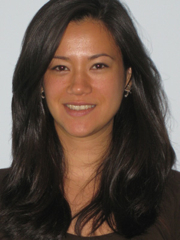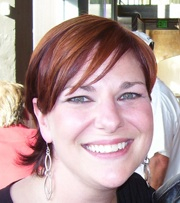
Mark Glaser is traveling this week, but we’re happy to have students from the Medill School of Journalism at Northwestern University filling in as special guest bloggers this week. They are in a class studying “locative media,” a new form of journalism that tells stories via cell phones based on your location.
If you’ve ever been on an audio tour of a museum or tooled around with an interactive map, you’ve experienced locative media. Reliant on numerous emerging mobile and location-based technologies (from GPS-enabled mobile phones to Google Maps-based applications), locative storytelling provides multimedia content that enhances a user’s connection to a given place.
Artists and tourism professionals were among the first to harness this new technology for storytelling. But recognizing the applications for a mainstream audience, media companies and advertisers have slowly made inroads in this new media space with geo-targeted mobile alerts, cell phone-appropriate television episodes and interactive online maps.
Given the infancy of the industry, however, there are still so many questions to answer and innovations to uncover.

Along with our classmates in this year’s New Media Publishing Project at Northwestern University’s Medill School of Journalism, we’re trying to figure out what these emerging location-based and mobile technologies can offer the news industry. Considered a capstone experience for graduate students interested in new media, the New Media Publishing Project class historically provides a small group of students with the opportunity to explore innovations in journalism.
Called LoJo (shorthand for locative journalism), our project this year aims to actively research and test the limitations of these new technologies, as well as create examples of locative storytelling that are appropriate for news organizations.
Through our research and readings, we agreed as a group that the kinds of stories best suited to this approach are tied to locations with historical significance or idiosyncratic characteristics. We set off individually to scout out possible ideas for our project and then, as a group, refined the list to newsworthy location-based stories with the greatest opportunity for original reporting.
One member suggested we create a retrospective of the 1968 Chicago Democratic National Convention, including a tour of the locations key to that event. Another member proposed a project to explore privacy in public places, which would have invited users with GPS-enabled devices to receive geo-triggered messages every time they encountered video cameras fixed on them.
Chicago’s 2016 Olympics Bid
Ultimately, the team turned its focus to Chicago’s bid to host the 2016 Summer Olympics because it fit three main criteria: 1) the event is newsworthy; 2) the event has location-specific details; and 3) the event touches on the social, cultural, environmental and political aspects of life in Chicago.
Chicago has been selected as a bid city for the 2016 Summer Olympics along with Baku, Azerbaijan; Doha, Qatar; Madrid, Spain; Prague, Czech Republic; Rio de Janeiro, Brazil; and Tokyo, Japan. In early June, the International Olympic Committee will narrow the list further and release the names of what it calls the “candidate cities.” On October 2, 2009, the IOC will reveal the winning city.
Chicago has a long way to go before clinching the nomination, but the Chicago 2016 organizing committee has made great strides in proposing and designing venues for the Summer Games.

The committee has pitched 27 different venue locations to the IOC, with historic Washington Park slated to be the home of a 80,000-seat Olympic Stadium for events and to host the opening and closing ceremonies. Although our tour won’t take users to each of the proposed venues, it will connect people to many of the places and spur them to imagine the physical, environmental and economic consequences of a Chicago Olympics.
For example, upon arriving at Washington Park, a participant’s GPS-enabled mobile device would automatically start playing interviews with Olympic organizers and community activists and start showing schematic drawings of the stadium. Now, we’re working on narrowing the list of stops from 27 to five and are conducting field visits and research to determine which stops are most feasible to create a smooth and organized storytelling experience.
As we refine our ideas for the project, a few pioneering projects in the locative media field remain top of mind and provide us with possible templates to follow. Three examples that have inspired us include:
> The Google Maps-powered London Profiler, which provides detailed demographic information for more than 30 neighborhoods in London, showcases locative technology’s ability to visually synthesize data in an engaging, user-friendly way.
> The award-winning Mount Rushmore Audio Tour exemplifies the power of locative media to integrate historic information with contemporary narratives. The self-guided tour allows users to hear historic recordings of Mount Rushmore’s sculptor and interviews with members of the surrounding community, while visiting the national park.
> The Sacramento Bee’s coverage of the Olympic torch’s journey through San Francisco in April allowed website visitors to experience the event in real time. By using Qik — a technology that streams live video from a mobile phone onto a website — the newspaper was able to make people feel as though they were part of the experience, a goal we also hope to achieve with our project.
In our next post, we’ll explain the process of reporting the GPS-based story…
To learn more about locative media, check out the posts on the subject at MediaShift Idea Lab by Leslie Rule and Paul Lamb.
Ki Mae Heussner is a graduate journalism student at Northwestern University’s Medill School. Prior to Medill, she worked for several years in the public, non-profit and private sectors, including for a U.S. senator and Lifetime Television.
Veteran newspaper reporter Amy Lee is a Medill MSJ ’08 candidate studying new media. She previously logged seven years as a metro reporter at The Detroit News and two years as a cops/courts reporter at the Port Huron Times Herald in Port Huron, Mich.
